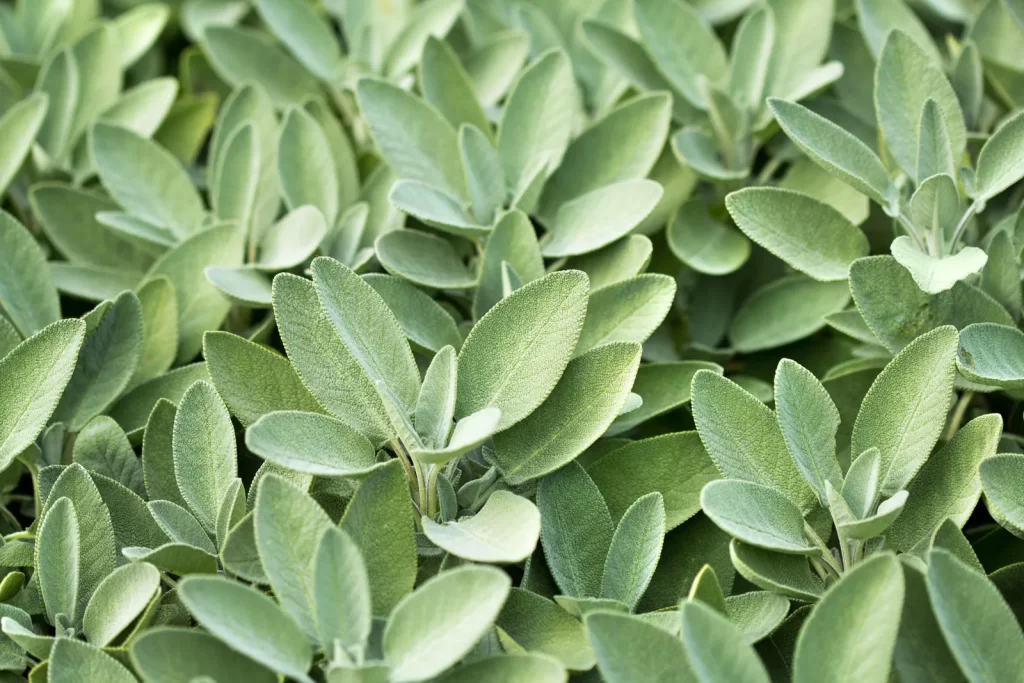
There are different types of sage, however for this, I am sticking with the common sage with the latin name of salvia officinalis.
Salvia officinalis is an aromatic, rather woody short lived perennial shrub in the mint family.
Sage is often mentioned as the herb of immortality, domestic virtue, health, and wisdom. Sage was a sacred ceremonial herb of the Romans. It has been cultivated for both culinary and medicinal purposes for many centuries in Europe.
The plant can grow to 2½ feet tall. The opposite leaves vary in color from gray to gray-green, or may be purple or golden. They are pebbly, slightly fuzzy, and up to 5″ long. The stems are green at first but become woody in the second year.
Common sage blooms in early summer. It has bluish-lavender to pink-lavender flowers in whorls on short, upright flower spikes. Each flower has two lips. The flowers are attractive to bees and butterflies and occasionally to hummingbirds. The leaves are medicinal and should be harvested before the plant flowers.
What are the medicinal benefits you might ask? Let’s talk about that.
- Digestive issues: Sage can help with gas, bloating, diarrhea, stomach pain, and heartburn
- Pain relief: Sage can help with pain after surgery, sore throats, and mouth inflammation
- Menopause symptoms: Sage can help with hot flashes, sweating, and memory issues
- Memory and thinking skills: Sage may help with memory and thinking skills in healthy adults
- High cholesterol: Sage may help lower LDL (“bad”) cholesterol and increase HDL (“good”) cholesterol
- Dental health: Sage contains tannins which can help with gum disease, bad breath, and whiten teeth
- Skin conditions: Sage can help with cold sores and sunburn
- Inflammation: Sage can help with inflammation, swelling, and redness
- Infection: Sage can help with bacterial and viral infections
- Menopausal symptoms: Sage contains phytoestrogens which help with menopause.
Sage can be used as a tea, tincture, mouthwash, or gargle. It can be applied directly to the skin or it can be inhaled for asthma.
If you want to purchase this herb, please consider using this affiliate link to purchase it. I highly recommend this link because of how they process and store herbs. You can’t always trust who you purchase from online, but with this company, I truly do feel it is top of the line and high quality. Just go to this link and type in ‘Sage’.
If you would like to find out more about the author or learn about other herbs, please consider visiting this link.
Stay natural!
~Dr. Amanda P. Cartwright